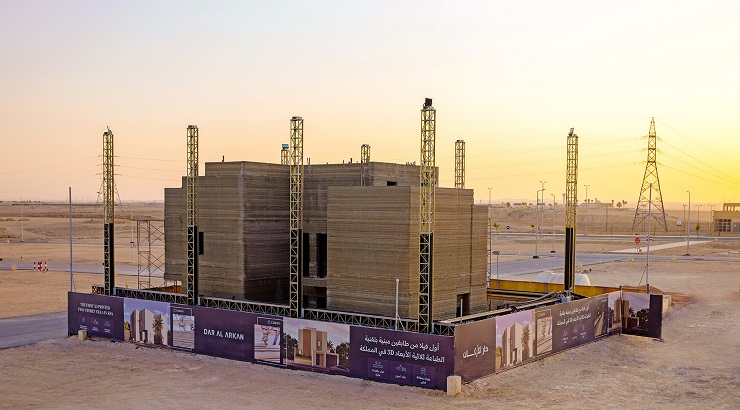Residential Projects
Inside the World’s Tallest 3D Printed Building
The 3-storey villa was made with COBOD International’s 3D printer.

Saudi Arabian property baron Dar Al Arkan has printed a 3-storey villa in Shams Al Riyadh, Saudi Arabia, – gifting the world its tallest 3D-printed building yet.
With a total height of 9.9 metres, the villa which is located in a massive development project that sits on 12 million square metres just northwest of the capital Riyadh, is officially the tallest on-site 3D printed building in the world.
It was made with a 3D construction printer acquired from COBOD International.
Low-cost materials were used at a cost of less than €10,000 to create the 3D printable concrete for the walls of the 330 m2 villa.
“The introduction of 3D construction printing enables us to focus on greater flexibility of design, strengthening productivity and achieving higher cost efficiency,” says Wael Al Hagen, Dar Al Arkan’s 3D construction printing project manager.
Two-storey + annex
The first floor of the villa has a total area of 130 m2 and includes several living areas, a kitchen and two toilets.
The second floor – measuring 140 m2 – has three bedrooms (one of which is the master bedroom), a living room, 2 bathrooms, and a balcony.
The third floor is a roof annex – with a total area of 60m2 – and holds a maid’s room with a bathroom, laundry room, and a multipurpose hall.
In Saudi Arabia, such a building is referred to as a two-storey + annex since the third floor is significantly smaller than the two first floors.
RELATED: The World’s Most Beautiful 3D Printed Homes
The building was made using local materials and the D.fab solution developed by Cemex and COBOD. The solution enables COBOD customers to source 99% of the concrete materials locally and only 1% from a central location.
According to Zaid Marmash, Head of Middle East & Africa for COBOD, Dar Al Arkan pushed the boundaries of construction by printing the villa in a desert area without using tents – even when temperatures rose to more than 40 degrees.
“The printing of the villa without the use of a tent shows the competence of the Dar Al Arkan team and their ability to handle our world-class technology. They are pushing the boundaries for the future of construction,” Marmash said.
Second villa
Following the completion of the villa, Dar Al Arkan moved the giant 3D construction printer to a different location for the development of another villa.
“We are currently building the second villa, which will typically take a month to complete, but we’ve already finished the first floor of 130 m2 in only eight days,” Wael Al Hagen said.
The upcoming 3D-printed villa has additional insulation layers and features that ensure energy conservation, saving up to 30% in energy consumption.














